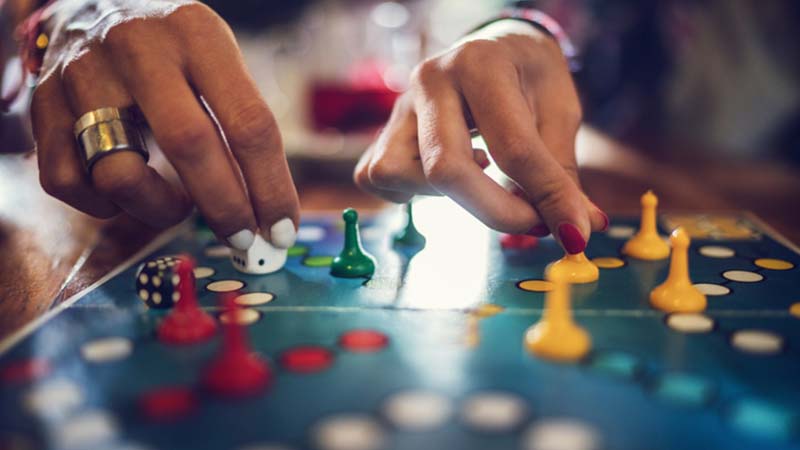Disegni Per Slot Machine
Remember the movie National Lampoon’s Vegas Vacation, when gambling fever consumes Chevy Chase’s character, Clark W. Griswold? He goes on a losing streak to beat all losing streaks while his son, Rusty, wins four cars by playing the slot machines. Maybe Clark would have done better if he had read Probability For Dummies! In this article, you discover the basic ideas behind slot machines and how they work, so that you can get past the myths and develop a strategy based on sound probability.
During this little doodle I decided to make a slot machine. But not your standard slot machine per say, but one designed a little bit more like the real thing. Sure it could have been done a little more simpler and not even using a Wheel class at all, but what fun is that? In this entry I show the creation of a slot machine from a bit more of a. A slot machine house edge is known by casino managers as the “hold”, and hold percentages vary a great deal, and do tend to be smaller at more expensive slots, frequently found to be around 1- 3% at the five dollar slots.
Understanding average payout

When casinos advertise that their slot machines pay out an average of 90 percent, the fine print they don’t want you to read says that you lose 10 cents from each dollar you put into the machines in the long term. (In probability terms, this advertisement means that your expected winnings are minus 10 cents on every dollar you spend every time the money goes through the machines.)
Suppose you start with $100 and bet a dollar at a time, for example. After inserting all $100 into the slot, 100 pulls later you’ll end up on average with $90, because you lose 10 percent of your money. If you run the $90 back through the machine, you’ll end up with 90 percent of it back, which is 0.90 x 90 = $81. If you run that amount through in 81 pulls, you’ll have $72.90 afterward (0.90 x 81 = 72.90). If you keep going for 44 rounds, on average, the money will be gone, unless you have the luck of Rusty Griswold!
How many pulls on the machine does your $100 give you at this rate? Each time you have less money to run through the machine, so you have fewer pulls left. If you insert $1 at a time, you can expect 972 total pulls in the long term with these average payouts (that’s the total pulls in 44 rounds). But keep in mind that casinos are designing slot machines to go faster and faster between spins. Some are even doing away with the handles and tokens by using digital readouts on gaming cards that you put into the machines. The faster machines can play up to 25 spins per hour, and 972 spins divided by 25 spins per minute is 38.88 minutes. You don’t have a very long time to enjoy your $100 before it’s gone!
The worst part? Casinos often advertise that their “average payouts” are even as high as 95 percent. But beware: That number applies only to certain machines, and the casinos don’t rush to tell you which ones. You really need to read or ask about the fine print before playing. You can also try to check the information on the machine to see if it lists its payouts. (Don’t expect this information to be front and center.)
Implementing a simple strategy for slots
Advice varies regarding whether you should play nickel, quarter, or dollar slot machines and whether you should max out the number of coins you bet or not (you usually get to choose between one and five coins to bet on a standard slot machine). In this section, you’ll find a few tips for getting the most bang for your buck (or nickel) when playing slot machines.
Basically, when it comes to slot machines, strategy boils down to this: Know the rules, your probability of winning, and the expected payouts; dispel any myths; and quit while you’re ahead. If you win $100, cash out $50 and play with the rest, for example. After you lose a certain amount (determined by you in advance), don’t hesitate to quit. Go to the all-you-can-eat buffet and try your luck with the casino food; odds are it’s pretty good!
Choosing among nickel, quarter, and dollar machines
The machines that have the higher denominations usually give the best payouts. So, between the nickel and quarter slots, for example, the quarter slots generally give better payouts. However, you run the risk of getting in way over your head in a hurry, so don’t bet more than you can afford to lose. The bottom line: Always choose a level that you have fun playing at and that allows you to play for your full set time limit.
Deciding how many coins to play at a time
When deciding on the number of coins you should play per spin, keep in mind that more is sometimes better. If the slot machine gives you more than two times the payout when you put in two times the number of coins, for example, you should max it out instead of playing single coins because you increase your chances of winning a bigger pot, and the expected value is higher. If the machine just gives you k times the payout for k coins, it doesn’t matter if you use the maximum number of coins. You may as well play one at a time until you can make some money and leave so your money lasts a little longer.
For example, say a quarter machine pays 10 credits for the outcome 777 when you play only a single quarter, but if you play two quarters, it gives you 25 credits for the same outcome. And if you play the maximum number of quarters (say, four), a 777 results in 1,000 credits. You can see that playing four quarters at a time gives you a better chance of winning a bigger pot in the long run (if you win, that is) compared to playing a single quarter at a time for four consecutive tries.
The latest slot machine sweeping the nation is the so-called “penny slot machine.” Although it professes to require only a penny for a spin, you get this rate only if you want to bet one penny at a time. The machines entice you to bet way more than one penny at a time; in fact, on some machines, you can bet more than 1,000 coins (called lines) on each spin — $10 a shot here, folks. Because these machines take any denomination of paper bill, as well as credit cards, your money can go faster on penny machines than on dollar machines because you can quickly lose track of your spendings. Pinching pennies may not be worth it after all!
I was bored and that can be a dangerous thing. Like doodling on the phone book while you are talking on the phone, I doodle code while answering questions on DIC. Yeah, it means I have no life and yes it means I was born a coder. During this little doodle I decided to make a slot machine. But not your standard slot machine per say, but one designed a little bit more like the real thing. Sure it could have been done a little more simpler and not even using a Wheel class at all, but what fun is that? In this entry I show the creation of a slot machine from a bit more of a mechanical aspect than a purely computerized one. It should provide a small sampling of classes and how they can represent real life machines. We cover it all right here on the Programming Underground!
So as I have already said, this little project was just something to play around with. It turned out kinda nice, so I thought I would share it. But what did I mean about it being mechanical in nature? Well, if you have ever played a real slot machine, not the digital ones they have in casinos now, you would see a metal case with a series of wheels. Typically it would be three wheels with pictures on them. When you put your money in and pull the handle the wheels would be set into motion. They would spin and then the first wheel would stop, followed by the second and then the third. After they have all stopped, the winnings are determined and you are paid out in coinage or credits.
I thought, why not be a bit mechanical in this slot machine design and create the wheels as a class called “Wheel” and give it the ability to spin independently of the other wheels? Have the wheel keep track of which picture (or in our case number) is flying by and report the results to the actual slot machine class. I could have done this mechanism without the need of a wheel at all and instead load up an array and have it randomly pick a number from the wheel. Little slimmer, little more efficient but wouldn’t show much programming theory.
What do we gain by recreating these Wheel classes and spinning them independently? Well, you gain a slight bit of flexibility. Independently we are able to control the speed of the spinning if we wanted to, we are able to grasp the idea of the wheel as a concept in our mind and manipulate it. We could easily built in features like if the wheel lands on a certain number it will adjust itself. Like some slots in Vegas, if you land on lets say a rocket in the center line, the machine would see the rocket and correct the wheel to spin backwards 1 spot (in the direction of the rocket as if the rocket was controlling the wheel). We could spin one wheel one way and another wheel another. We could inherit from that wheel and create a specialized wheel that does a slew of new different behaviors. All encapsulated into one solid object making the actual Machine class oblivious to the trickery of the wheel itself… encapsulation at its finest!
The machine class we create will contain 3 pointers. Each to one of the wheels. The machine itself will be in charge of a few different tasks. Taking money, issuing and removing credits, determining when to spin, telling each of the wheels to spin and checking our winnings based on some chart we create. It has enough on its plate than worrying about the wheels and reading their values.
So lets start with our Wheel class and its declaration/implementation…
wheel.h
As you can see the wheel itself is not a difficult concept to envision. The bulk of the work is in the read() method. Here we simply read the values from our internal array of integers (the values on the wheel) and return those values as an array of the three integers… representing the visible column. This column will then be loaded into our 2-Dimensional Array back in the Machine class. The 2D array represents the view or screen by which the user sees the results. Remember that the user never gets to see the entire wheel. Only the 3 consecutive values on the face of the wheel.

Here is how it may look in the real world. We have our machine with the three wheels and our 2D array called “Screen” which acts as our viewing window. Each wheel will report its values and those values will be put into the screen…
Below is our machine class…
machine.h
This looks like a lot of code but really it is not if you look at each function. Most of them are very very simple to understand. We have a spin method which essentially spins each of the wheels, reads their values back from the Wheel class into a pointer (representing each column), then they are loaded into the 2D array one column at a time (our view screen), printed for the user to see the results and lastly the winnings are checked. The checkwinnings() method determines which rows to check based on the amount of the bet. If they chose 1 line, it checks for winning combinations on the middle row only. If they choose 2 lines, it checks the middle and top lines, 3 line bet checks all three horizontal rows, 4 line bet checks the first diagonal as well and 5 line bet checks both diagonals in addition to the lines.


How does it check the lines? Well each line is given to the checkline() helper function which compares the 3 values of the line against an enumerated type of various symbols. Here we are just assigning a symbol against each numbered value to help the programmer determine which numbers correspond to which winning combos. For instance, luckyseven represents the number 3 in the enumeration. So if it runs across a line with 3 number 3s, then it knows it hit the grand jackpot and credits the player 1000. This method makes things easy because if we ever wanted to change the win patterns later, we could change the enum and checkline method to do so. We could also build in multiple types of symbols and even let the user choose what slot machine game they want to go by. It becomes very flexible and is a testament to great design!
Lastly we can put some tests together just to show some the various aspects of how this thing works and how the programmer can use the classes…
Disegni Per Slot Machines
slotmachine.cpp
Disegni Per Slot Machine Games
This simply inserts a 5 dollar bill and a coin for good luck. Then bets 5 lines and spins. Despite the outcome we go and bet five lines again and spin once more. Hopefully we win something this time around! But either way, those are the classes for you and I hope you like them. As always, all code here on the Programming Underground is in the public domain and free for the taking (just don’t cause a mess in isle 3, I am tired of running out there for cleanup). Thanks for stopping by and reading my blog. 🙂